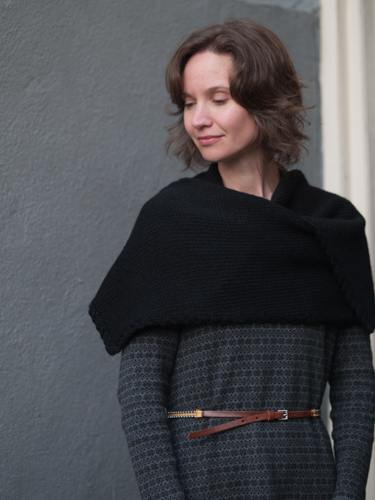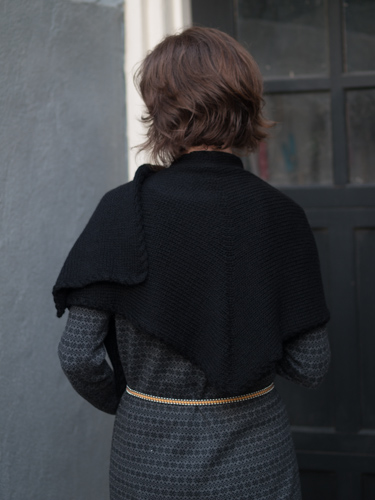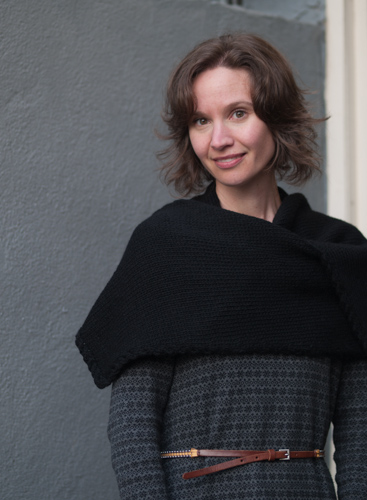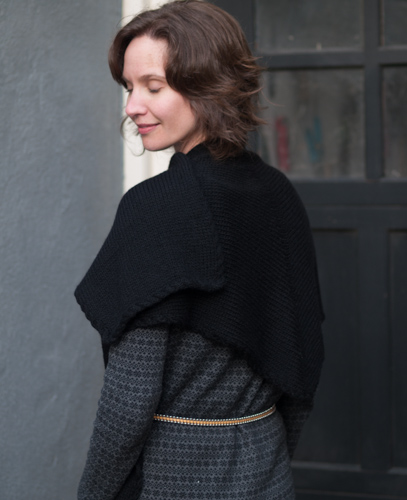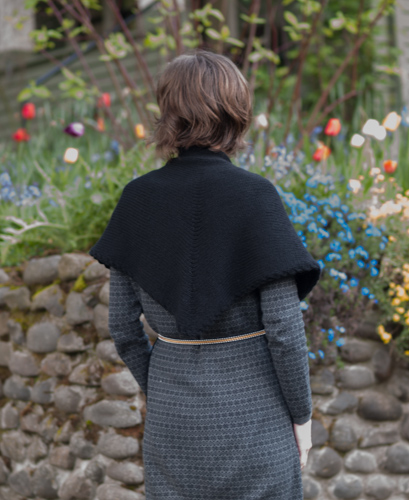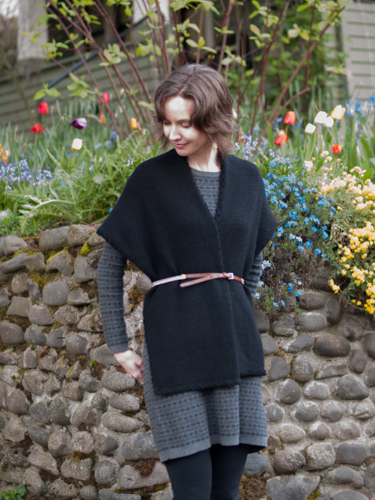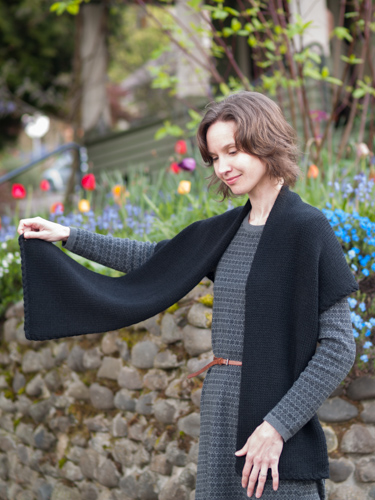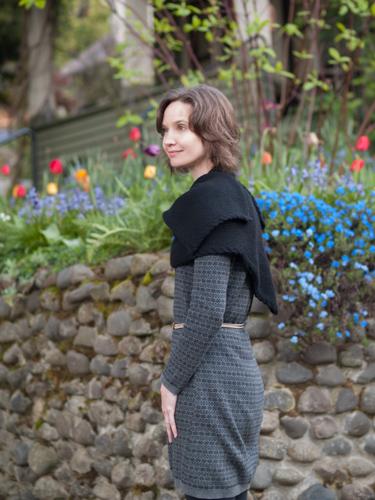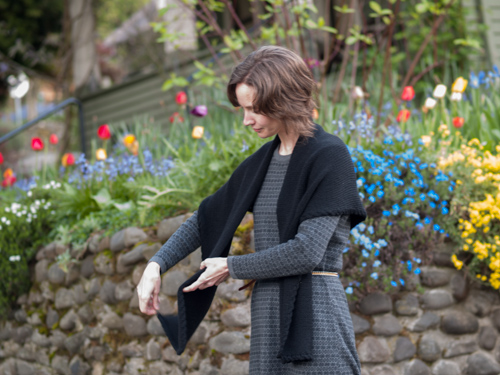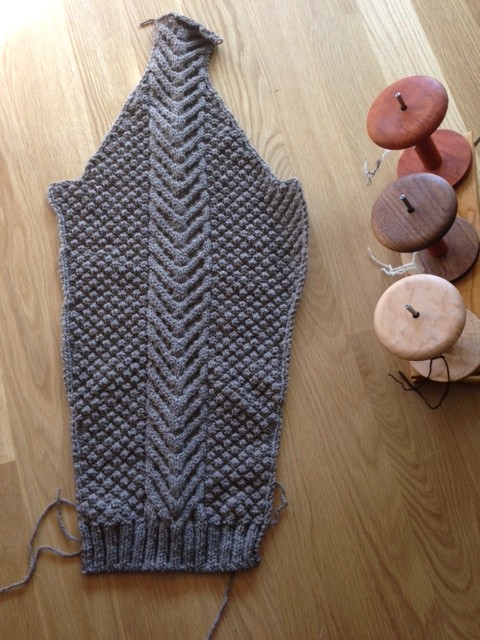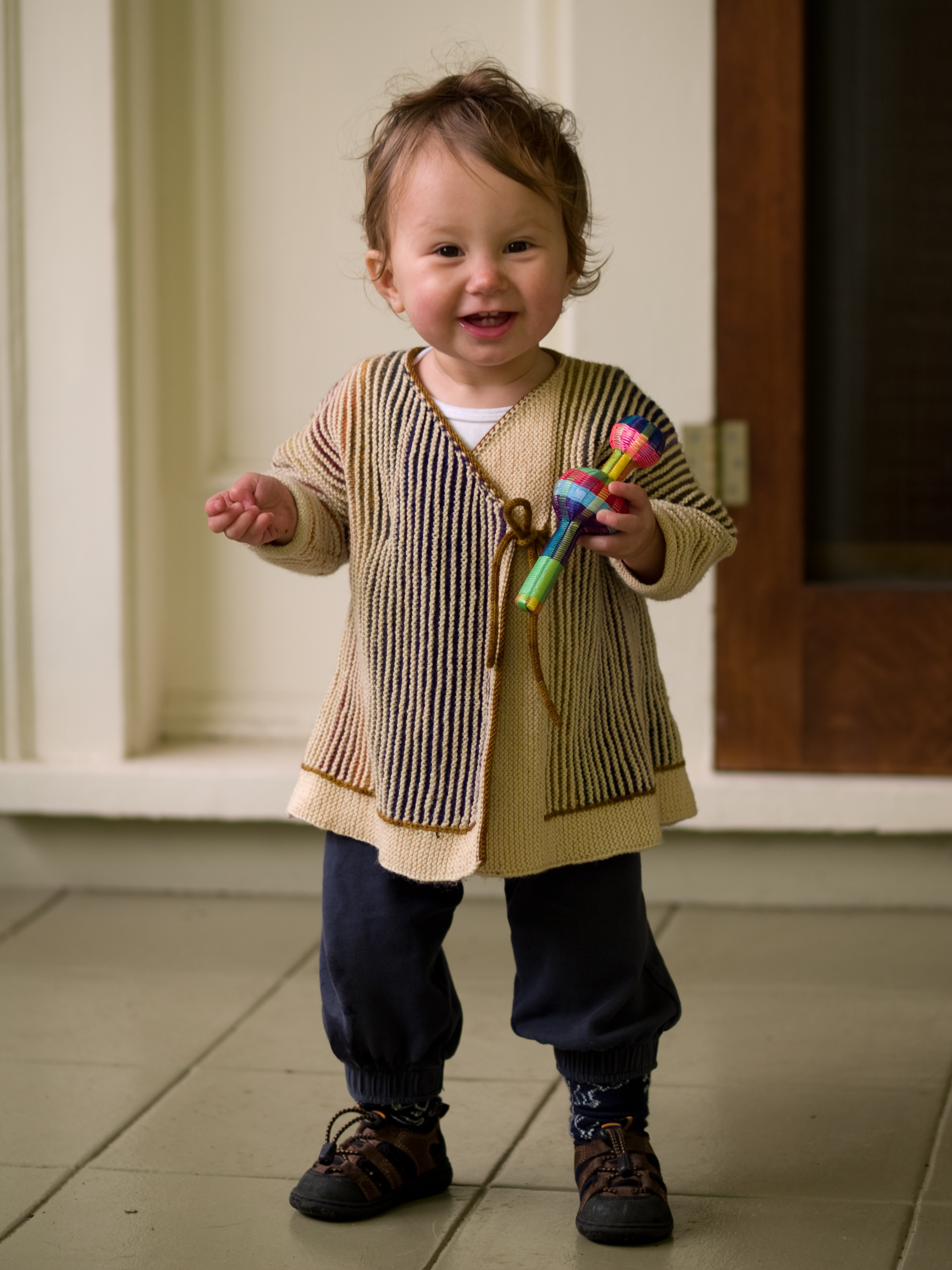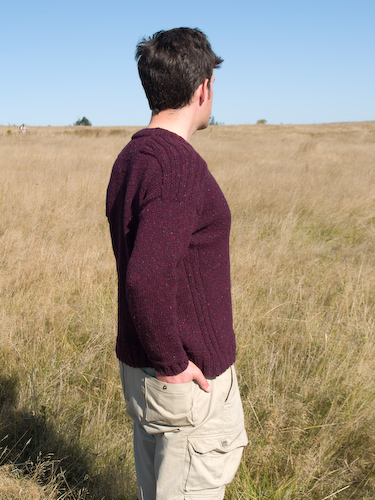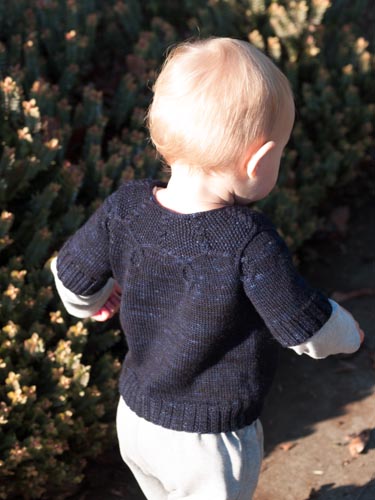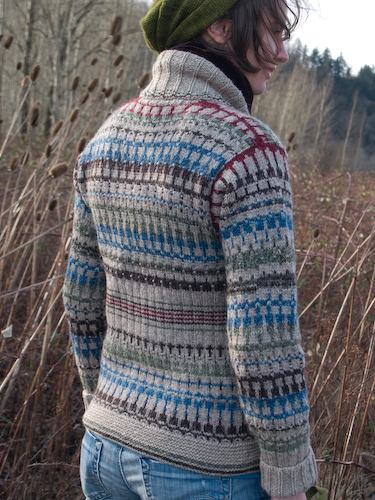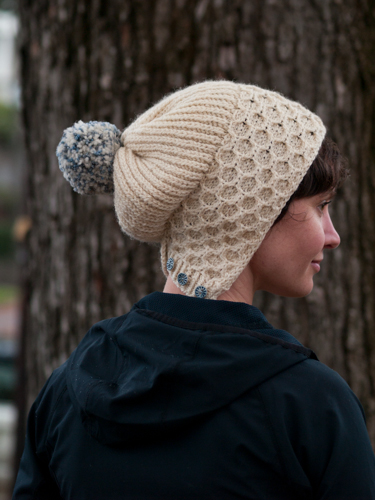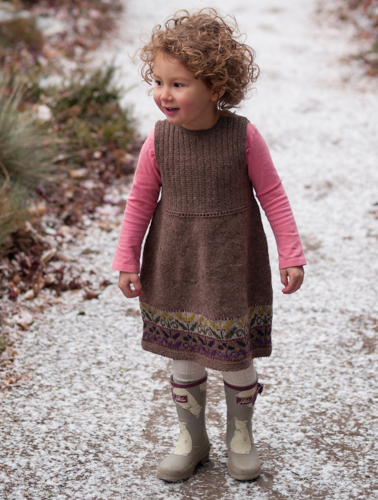Meet this nameless black shawl. It is very warm. It is very soft. It is rather more fun to knit than you might expect for this yardage of stockinet.
It is worked from end to end, beginning with a strip of cable and a pick-up along the edge of said strip, with short rows to curve the cable up around both long sides so that the edging can continue right along with the knitting. The piece widens gradually as you proceed toward the center.
From the back, it looks like a triangle. This bit is accomplished with short rows. I promise they are not as difficult as you might fear. You might even enjoy them.
(Please pardon the glowing weirdness of my forehead. No amount of post-production can eliminate it. I am a beacon. The British are coming by land.)
The fronts are generous in length. There’s plenty of fabric to wrap over one or both shoulders (your favorite shawl pin would look just right here), or you can leave them to dangle. I don’t know if securing them with a belt is currently an approved fashion, but why not? It’s comfortable and convenient and I think it looks rather smart, really.
This shawl used exactly 3.5 skeins of Cascade EcoCloud wool, or approximately 575 yards. I knit it on a US #10.5 (6.5mm) needle, which really makes the project fly. If you’d like to test it, let me know here or on Ravelry. I am working up numbers for a lighter gauge (same dimensions) and should have a draft pattern ready by the end of the week! Maybe I’ll have thought of a name by then…
